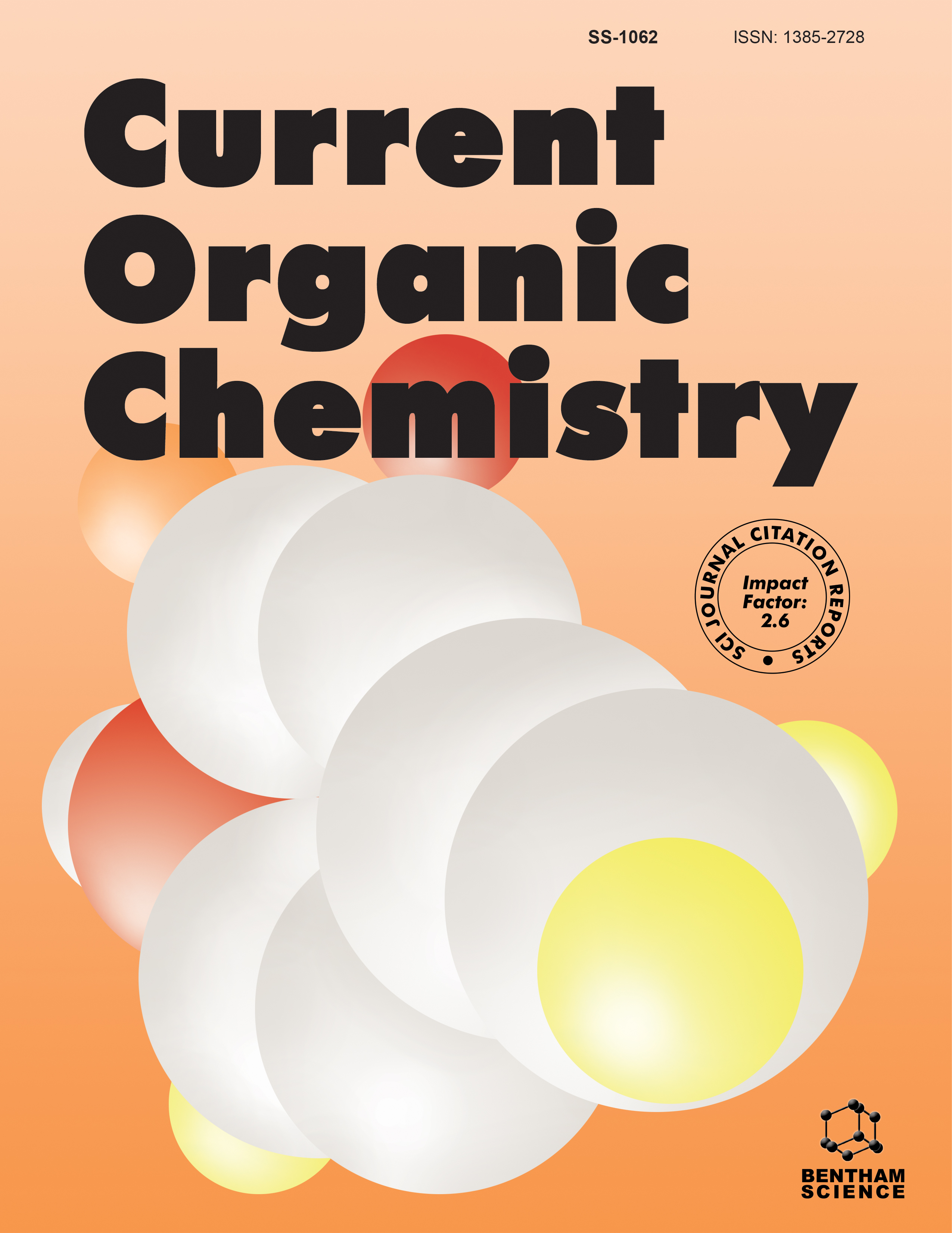- Home
- A-Z Publications
- Current Organic Chemistry
- Previous Issues
- Volume 14, Issue 11, 2010
Current Organic Chemistry - Volume 14, Issue 11, 2010
Volume 14, Issue 11, 2010
-
-
Organic Synthesis and Improved Biological Properties of Modified mRNA Cap Analogs
More LessAuthors: Anilkumar R. Kore, Irudaya Charles and Muthian ShanmugasundaramThe aim of this review is to emphasize the importance of modified dinucleotide cap analogs and their useful biological and therapeutic applications. Dinucleoside 5'-5'-triphosphates fulfill numerous regulatory, signaling, or energetic functions (mRNA metabolism- synthesis, nucleo-cytoplasmic transport, translation, silencing, and turnover) in biological systems. In this context, we highlight the recent studies on the improvement i Read More
-
-
-
Recent Uses of Iron Catalysts in Organic Reactions
More LessAuthors: Liu and Liang-XianIron catalysts are extensively used in organic reactions in recent years since iron is one of the most abundant metals on earth, consequently one of the most inexpensive, and environmentally friendly ones, and many iron salts and complexes are commercially available. This comprehensive review attempts to cover the advances of iron-catalyzed organic reactions in the literature from 2007 to Sept 2009, particularly focusing Read More
-
-
-
Cation Enhanced trans-cis Photoisomerization in Lariat Azacrown Ethers
More LessAuthors: Perepogu Arun Kumar, Uppalanchi Srinivas and V. Jayathirtha RaoWe describe the synthesis and effect of complexation on photochemical E (trans) to Z (cis) isomerization of lariat azacrown ethers. Lariat azacrown ethers-Ca2+ complexes are characterized by UV-Vis, 1H-NMR and fluorescence techniques. Photostationary state composition of E-Z isomers upon irradiation under direct excitation and complexation with Ca(ClO4)2, quantum yield of photoisomerization, and fluorescence properties a Read More
-
-
-
The Pauson-Khand Reaction in the Synthesis of Pharmacologically Active Compounds
More LessThe [2+2+1]-cycloaddition of an alkyne, an alkene and carbon monoxide known as Pauson-Khand reaction is a powerful way to install two new functional groups and a cycle into a molecule. The great potential of this reaction has thus far been underestimated in the synthesis of pharmacologically active compounds.
-
-
-
TiO2 in Organic Photosynthesis: Sunlight Induced Functionalization of Heterocyclic Bases
More LessAuthors: Cristian Gambarotti, Carlo Punta, Francesco Recupero, Tullio Caronna and Leonardo PalmisanoIn the last decades photocatalyzed organic processes have attracted the great interest, due to their low environmental impact. Various oxidation and reduction processes of organic substrates have been developed as alternative routes to the “classical” synthesis of more complex molecules. In this attempt TiO2 is actually largely studied and employed, especially as catalyst in the organic pollutants photodegradation to produc Read More
-
Volumes & issues
-
Volume 29 (2025)
-
Volume 28 (2024)
-
Volume 27 (2023)
-
Volume 26 (2022)
-
Volume 25 (2021)
-
Volume 24 (2020)
-
Volume 23 (2019)
-
Volume 22 (2018)
-
Volume 21 (2017)
-
Volume 20 (2016)
-
Volume 19 (2015)
-
Volume 18 (2014)
-
Volume 17 (2013)
-
Volume 16 (2012)
-
Volume 15 (2011)
-
Volume 14 (2010)
-
Volume 13 (2009)
-
Volume 12 (2008)
-
Volume 11 (2007)
-
Volume 10 (2006)
-
Volume 9 (2005)
-
Volume 8 (2004)
-
Volume 7 (2003)
-
Volume 6 (2002)
-
Volume 5 (2001)
-
Volume 4 (2000)
Most Read This Month
Article
content/journals/coc
Journal
10
5
false
en


